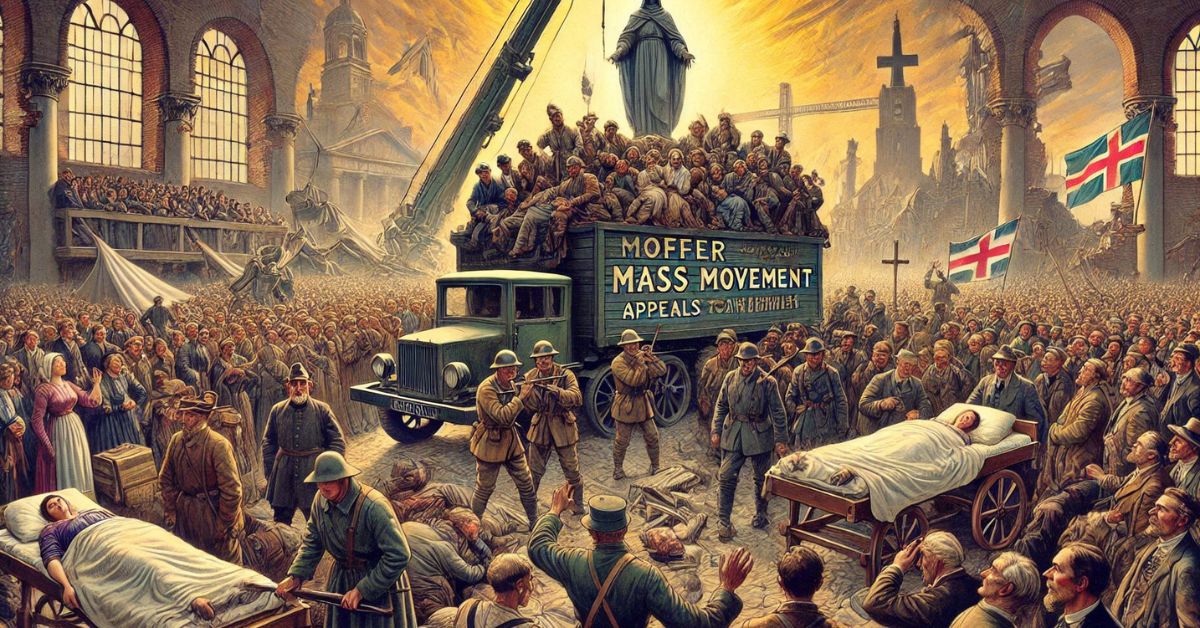Hoffer Mass Movement Appeals to the Wounded movements have been a driving force behind historical revolutions, ideological shifts, and social transformations. Eric Hoffer, in his acclaimed work The True Believer: Thoughts on the Nature of Mass Movements, sheds light on why such movements hold an almost magnetic appeal for individuals who feel discontented or “wounded.” Hoffer’s analysis offers timeless insights into human psychology and the sociopolitical dynamics that shape collective action. This article explores Hoffer’s concept of the “wounded” and their intrinsic connection to mass movements.
Who Are the Wounded?
Hoffer’s term “wounded” refers to individuals who feel alienated, inadequate, or deeply dissatisfied with their personal lives or societal status. These people often experience a pervasive sense of failure, meaninglessness, or disconnection from their environment. The wounded may:
- Perceive themselves as victims of systemic oppression, personal shortcomings, or uncontrollable circumstances.
- Feel out of place within their cultural, economic, or social milieu.
- Harbor a longing for redemption, purpose, or validation.
For the wounded, a mass movement’s promise of transformation becomes a powerful antidote to their internal struggles.
Why Mass Movements Appeal to the Wounded
Hoffer identifies several key reasons why mass movements attract individuals grappling with personal discontent:
Promise of a New Identity
Mass movements often provide a chance to transcend personal limitations by becoming part of something larger. For the wounded, who may feel trapped by their perceived failures, this offers a means of reinvention.
By aligning themselves with a movement, they shed their old identity and adopt one imbued with purpose and collective strength. This new identity often comes with a sense of belonging and the moral high ground, allowing individuals to redefine their self-worth.
Escape from Personal Responsibility
Hoffer argues that mass movements often absolve individuals of personal responsibility by directing their focus outward. Instead of addressing their own flaws or failures, the wounded can project their dissatisfaction onto external forces like oppressive systems, corrupt leaders, or societal inequities.
This externalization not only provides relief but also fuels their commitment to the movement, as they view its success as integral to resolving their grievances.
Simplicity in Complex Times
Mass movements thrive on offering simple, absolute solutions to complicated problems. For individuals overwhelmed by the complexity of their personal or societal struggles, these movements provide clarity. The dichotomy of “us vs. them,” good vs. evil, or progress vs. regression appeals to the wounded’s desire for certainty and direction.
Also Read: Omaha Seeya Wahyala: Meaning and Significance
Redemption Through Sacrifice
The wounded often seek redemption for their perceived inadequacies. Mass movements offer a platform for self-sacrifice, whether through activism, financial contributions, or even martyrdom. This sacrifice allows individuals to feel noble and purposeful, reinforcing their commitment to the cause.
Channeling Alienation into Action
Alienation is a common theme among the wounded, who may feel disconnected from family, community, or societal norms. Mass movements convert this alienation into collective action, transforming feelings of powerlessness into empowerment. By uniting with others who share similar grievances, the wounded find solidarity and validation.
Historical Examples of Mass Movements and the Wounded
Religious Revivals
Religious movements often draw heavily from populations experiencing social or personal upheaval. For instance, during the Great Awakenings in the United States, individuals struggling with poverty, displacement, or moral crises found solace in the promise of divine salvation and communal belonging.
Revolutionary Movements
The French and Russian Revolutions attracted individuals disillusioned by economic disparity and political oppression. These revolutions provided a vision of equality and justice, galvanizing the wounded into transformative action.
Modern Extremism
In contemporary times, extremist groups often appeal to individuals feeling marginalized or disenfranchised. The allure of a clear purpose, coupled with the promise of belonging, draws the wounded into ideologies that promise societal or spiritual redemption.
The Role of Leaders and Propaganda
Hoffer highlights the critical role of leaders in shaping and sustaining mass movements. Charismatic leaders often exploit the vulnerabilities of the wounded, using propaganda to reinforce the movement’s ideals. This propaganda:
- Frames the movement as the ultimate solution to personal and societal woes.
- Demonizes opposition, creating a common enemy.
- Celebrates the sacrifices of its followers, elevating their status within the movement.
Through these tactics, leaders ensure the wounded remain loyal and motivated, often to the point of unquestioning devotion.
The Dual-Edged Sword of Mass Movements
While mass movements can empower individuals and drive positive societal change, they can also become destructive. Hoffer warns that:
- Blind Devotion: The wounded may become so invested in the movement’s ideals that they overlook its flaws or excesses.
- Suppression of Individuality: In their quest for belonging, individuals may suppress their critical thinking and unique perspectives.
- Escalation of Conflict: The “us vs. them” mentality can lead to polarization, violence, and the perpetuation of division.
Modern Relevance of Hoffer’s Insights
Hoffer’s ideas remain profoundly relevant in today’s world. Social media, political polarization, and economic instability have created fertile ground for mass movements. From grassroots activism to extremist factions, the wounded continue to seek solace in collective identities. Understanding the psychological appeal of these movements can:
- Help mitigate the rise of harmful ideologies.
- Foster empathy for individuals drawn to such movements.
- Promote inclusive approaches that address the root causes of alienation and discontent.
Conclusion About Hoffer Mass Movement Appeals to the Wounded
Eric Hoffer’s exploration of mass movements and their appeal to the wounded offers invaluable insights into human behavior and societal dynamics. By understanding why individuals gravitate toward these movements, we can better address the underlying issues that drive alienation and foster a more inclusive, equitable world. Mass movements have the potential to unite and empower, but their transformative power must be wielded with caution to avoid the pitfalls of blind allegiance and divisive rhetoric.

